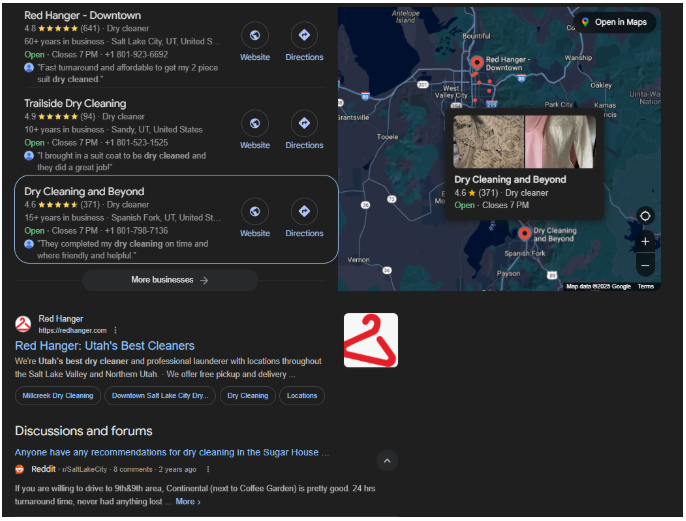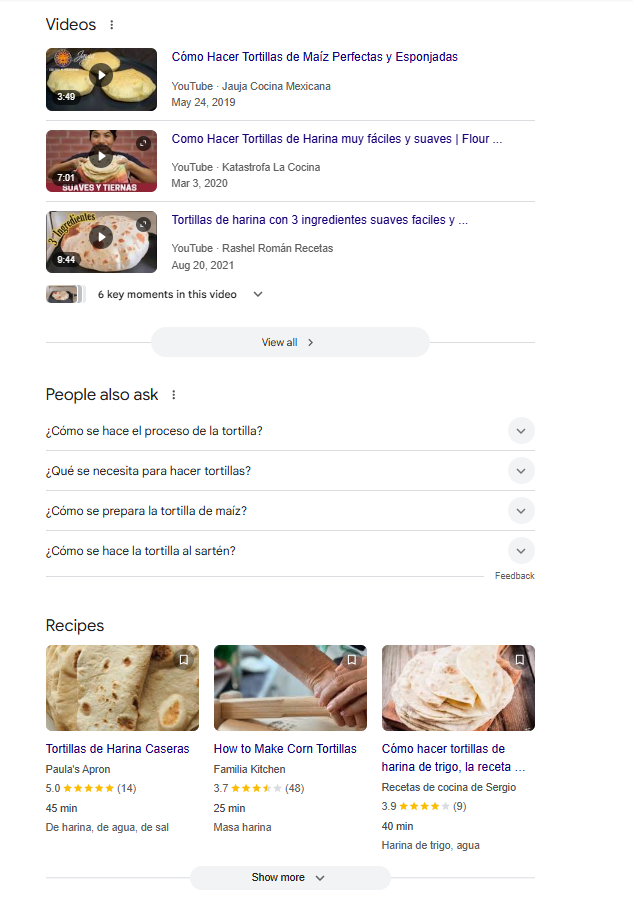The Business of International SEO Ranking and How to Do It

One of the most significant benefits of a robust online presence is its power to dramatically expand your reach, connecting your products and services with a global audience. This is especially true for internet-based businesses offering non-physical services like digital marketing, graphic design, consulting, and more. The ability to attract customers from a neighboring country or continents across the globe isn’t just a possibility—it’s often a necessity for many brands to survive and thrive in a competitive market.
While Google overwhelmingly dominates the global search market, Bing holds a notable share, and regional engines like Yandex and Baidu are vital in their respective areas. These platforms provide the greatest opportunity to capture organic traffic. Naturally, this means every website should strive for inclusion in their organic search results. However, in this hyper-competitive world, merely getting included isn’t enough. Your site could land on page 1,000, unseen by potential customers. Thus begins the quest for page-one rankings, especially if your ambition is to engage users from multiple countries or establish a truly global audience.
This post will dive into why your business might benefit from ranking across multiple countries, what search engines consider when delivering relevant results, the impact of emerging technologies like AI, and crucial strategies to enhance your chances of ranking internationally. We’ll also cover other vital considerations for a successful international SEO endeavor.
Cross Ranking Business Examples
To illustrate, let’s consider a few scenarios where a cross-border SEO strategy is warranted:
1.Local Dentist on the Border: A dentist operates in a city bordering two countries. They can serve anyone who visits their location and believe cross-border customers might find their services more cost-effective. Their website currently uses a ccTLD (country-code top-level domain) and has service pages in only one language.

2. Tree Removal Franchise: This business provides tree and shrub removal, with three franchise locations near a border—two in one country, one in the neighboring country. All locations offer the same services. Their website is a gTLD (generic top-level domain) with separate location pages, supporting only one language.

3. Multi-Language Content Agency: This agency offers content and blog writing services. With writers fluent in multiple languages and writing styles, they can serve diverse customers globally. Orders are placed, and work is delivered electronically. Their site uses a gTLD and supports five languages, but only two have dedicated, professionally translated pages, while the other three rely on an automated CMS plugin.

4. Global Industrial Machinery Provider: A major provider of industrial equipment (bulldozers, excavators, cranes) serves businesses worldwide. They can custom-build and ship machines globally once financed. Their extensive website, rich with product information, has built significant trust. It uses a gTLD, features only English content, and mentions its US headquarters.

Understanding Search Engine Ranking Factors
Before analyzing how these businesses might rank internationally, let’s explore what modern search engines and their algorithms consider when processing a search query. These factors are dynamic and increasingly sophisticated.
- Device Type: The device a searcher uses (desktop, mobile, tablet) significantly influences how information is displayed. Google’s “mobile-first indexing” (now standard practice) underscores this, prioritizing the mobile version of your site for ranking.
- Location: A device’s location, pinpointed or inferred, dictates the default search engine version (e.g., https://www.google.com/search?q=google.com, google.co.uk, google.ca) and default language for users not signed in or without specific settings.
- Query Type & Intent: What someone searches for (informational, transactional, navigational, local, etc.) and their underlying intent profoundly impacts results. Search engines invest heavily in understanding nuanced intent, with algorithm updates becoming more frequent and focused on delivering truly helpful content.
- Search Language: The language of the query drastically narrows or expands the pool of relevant results and can influence which content elements are prioritized.
- Search History & Personalization: User search history and previous interactions play an increasing role in tailoring search results to individual preferences and needs.
- E-E-A-T (Experience, Expertise, Authoritativeness, Trustworthiness): A critical component of Google’s quality assessment. Search engines strive to surface content from sources that demonstrate strong E-E-A-T signals, especially for “Your Money Your Life” (YMYL) topics. This includes author credibility, site reputation, content accuracy, and secure connections.
Examples in Action:
- Searching for “best dry cleaner” on a mobile phone will heavily prioritize Location and Device Type.

- A broader query like “how to make tortillas” will emphasize Query Type (Informational) and Device Type.

- Changing the query to Spanish, “cómo hacer tortillas,” makes Search Language and Query Type paramount.

Understanding this ever-evolving interplay of ranking factors is crucial, especially when targeting cross-country rankings.
The Impact of AI & Search Generative Experience (SGE) on International Search
The search landscape is undergoing a significant transformation with the integration of Artificial Intelligence, most notably through Google’s Search Generative Experience (SGE), now often referred to as AI Overviews. This feature provides AI-generated summaries and answers directly at the top of search results pages, fundamentally altering user interaction and organic visibility.
For international SEO, SGE presents both challenges and opportunities:
- Potential for Reduced Clicks: As AI Overviews directly answer many queries, especially informational ones, users might not click through to individual websites as often. This necessitates a strategy that goes beyond just ranking, focusing on being cited within these AI Overviews.
- Emphasis on High-Quality, Structured Content: Clear, well-structured content that directly answers user questions and demonstrates strong E-E-A-T is more likely to be used by AI models. Implementing robust schema markup and structured data is becoming even more critical.
- Nuanced Understanding of Intent: AI can better understand user intent across different languages and cultural contexts. This means generic or poorly translated content will likely perform worse, while truly localized and helpful content will stand out.
- New Opportunities for Visibility: Businesses that provide authoritative, comprehensive information can become go-to sources for AI Overviews, enhancing brand visibility and thought leadership, even if direct clicks decrease for some queries.
Partners and businesses must adapt by focusing on creating in-depth, expert-driven content, optimizing for semantic search, and ensuring technical SEO best practices are flawlessly implemented to maximize their chances of appearing in this new AI-driven search environment.
Website Factors for International Search Inclusion
For a website to effectively rank across countries, several elements must be in place. Their importance varies, and some have granular nuances that could warrant entire blog posts. Here’s a high-level overview:
- Domain Strategy (ccTLD, gTLD, Subdomain, Subfolder): Your domain and its structure are foundational.
- ccTLDs (e.g., .de, .fr): Send the strongest signal to search engines and users about the site’s specific country focus. However, they can silo authority and complicate expansion into other countries.
- gTLDs (e.g., .com, .org): Offer flexibility for international targeting. To specify target countries with a gTLD, you need to use other signals like hreflang attributes, subfolders/subdomains, and Google Search Console settings.
- URL Structure (Subfolders vs. Subdomains): When using a gTLD for multiple languages/regions, subfolders (e.g., example.com/en-us/, example.com/fr-ca/) are generally recommended over subdomains (e.g., en-us.example.com, fr-ca.example.com). Subfolders consolidate authority signals under the main domain, which can be beneficial for SEO. While Google states it can handle both, the SEO community largely observes better authority consolidation with subfolders. Subdomains might be suitable for distinctly separate business lines but often require more effort to build authority independently.
- Hreflang Attributes: Crucial for multilingual and multi-regional sites, hreflang tags tell search engines which language and regional version of a page is intended for specific users. Correct implementation (bidirectional, self-referencing, x-default for unspecific languages/regions) is vital to prevent duplicate content issues and serve the right content to the right audience.
- Content Language & Localization: Beyond simple translation, effective international SEO demands localization. This means adapting content to the target audience’s language nuances, cultural context, units of measurement, currency, date formats, and local search terminology. Automated translation plugins are rarely sufficient for high-quality user experience or competitive rankings.
- Trust & Authority (E-E-A-T): Page authority, often derived from high-quality backlinks and strong E-E-A-T signals, helps search engines identify notable pages, especially for competitive topics. Building trust internationally means demonstrating local relevance and credibility in each target market.
- Content Context: The overall theme and specific information on your pages determine relevance for particular audiences and queries. This applies to individual pages and the site as a whole and can be influenced by external factors like backlinks and mentions.
- Server Location & CDN: While not a primary ranking factor, server location and the use of a Content Delivery Network (CDN) can significantly impact page load speed for international users. Faster load times improve user experience, which is a ranking factor.
Examples of Website Factors in Play:
- A search for “französische bulldogge” (French Bulldog) in the United States, where German is not the primary language, will see search engines prioritize Content Language, Trust, and Content Context.
- Searching “que voir à Rome” (what to see in Rome) from France makes sense for French results. A Rome-based business could capitalize on this by having well-localized French content. Here, Content Context, Content Language, and Domain (if it signals Italian origin but has strong French content) play big roles.
- A product search like “electric scooter for sale in Zürich” in Switzerland (where English is commonly used but not official) might see Domain (e.g., a .ch domain or a gTLD with clear Swiss targeting), URL Structure, Content Language, and Trust as main factors.
By now, we should have a good understanding of how cross-country and multi-language factors impact search results.
Cross Ranking Business Examples: Realistic Outcomes & Strategic Needs
Let’s revisit our examples and predict their likely ranking outcomes, then outline the strategic adjustments needed for international success. (The original “Assumed Rankings” have been integrated here for a more direct flow.)
- Local Dentist on the Border
- Realistic Ranking: Business reach will likely hit a hard stop at the border, especially with a ccTLD (e.g., .ca). Even with a gTLD, their reach into the neighboring country (e.g., the US) will be limited without targeted efforts, as local US dentists will be prioritized.

- Business/Strategy Needs:
- Switch to a gTLD: This is a foundational step to signal broader ambition.
- Localized Content for the US Audience: Create content specifically addressing why US residents on the other side of the border should consider their services (e.g., cost benefits, specific expertise). This requires keyword research for the US market.
- Localized Service Pages: If targeting a specific US town, create service pages optimized for that location (e.g., “Dentist near [US Border Town]”). This needs careful phrasing to avoid keyword stuffing and to compete with actual local businesses.
- Build Authority in the US: Actively seek reviews, testimonials, and potentially local citations from the US side of the border.
- Partner Perspective: This business could benefit from an SEO partner experienced in cross-border local SEO to manage the complexities of gTLD setup, localized content creation, and authority building in a new market.
- Tree Removal Franchise
- Realistic Ranking: With a gTLD and separate location pages, they will likely rank well for their physical locations within their respective countries. However, the franchise in the neighboring country will primarily rank within that country’s search results. National-level searches will still be highly competitive.

- Business/Strategy Needs:
- Optimize Local Pages: Ensure each location page is fully optimized for its respective local area and language (if different).
- Consistent NAP & Local Signals: Maintain accurate Name, Address, Phone (NAP) information and build local citations for each franchise in its respective country.
- Address National Competition: To compete nationally in either country, they need to ensure their content is superior to top-ranking competitors for broader terms and build significant domain authority. This involves in-depth content matching searcher intent for national queries.
- Client Perspective: Clear delineation of service areas per franchise and robust local SEO for each are key. National campaigns require significant ongoing investment.
- Multi-Language Content Agency
- Realistic Ranking: This business has high potential but faces varied outcomes. They will be eligible to rank in search indexes for the languages they have dedicated, professionally translated and localized content for. The pages relying on automatic translation plugins will likely perform poorly, offering a bad user experience and failing to rank competitively. Generic or poorly localized content, even if translated, will struggle.

- Business/Strategy Needs:
- Professional Translation & Localization: This is paramount. Invest in high-quality human translation and localization for all five languages, ensuring content resonates culturally and uses appropriate local keywords. Ditch the CMS plugin for primary content.
- Implement Correct URL Structure: Use subfolders for language/region versions (e.g., example.com/en/services, example.com/es/services).
- Hreflang Implementation: Correctly implement hreflang tags to map all language versions.
- Localized Marketing: Develop content marketing strategies (blogs, case studies) tailored to each target market and language, demonstrating expertise and understanding of local business needs. This includes localizing for the country and potentially major regions/cities (e.g., province, state).
- Partner Perspective: An agency partner could manage the complex hreflang implementation, coordinate localization efforts across multiple languages, and develop targeted content strategies for each market, ensuring consistency and quality. Start with the weakest content (worst rankings/traffic) or the content with the most opportunity.
- Global Industrial Machinery Provider
- Realistic Ranking: With a robust English gTLD site, they likely rank well worldwide for English searches related to their niche products. However, they are severely limiting their reach by not offering content in other languages. Their US headquarters mention might also slightly skew results towards the US nationally, even if they serve globally. External signals (directories, articles) can also reinforce this US-centric context.

- Business/Strategy Needs:
- Phased Content Translation & Localization: Given the site’s size, translate and localize product and service information into key target market languages. Prioritize markets with the highest potential ROI. Use subfolders (e.g., example.com/de/products/excavators) for organization and authority consolidation. While subdomains can be used (e.g., for vastly different organizational structures or branding per country), they often require more effort to build individual authority. For most international SEO strategies aiming to leverage existing domain strength, subfolders are preferable.
- Hreflang for All Versions: Implement hreflang meticulously across all language versions.
- Localized Marketing & Support: Consider hiring local marketing professionals or translators/writers in key markets to ensure content truly resonates. Offer customer support in local languages.
- Establish Local Presence (If Viable): For truly deep market penetration, establishing a physical presence (sales offices, distributors) in key regions can significantly boost local trust and rankings, though this is a major investment.
- Partner Perspective: A project of this scale often requires a dedicated SEO partner like Boostability to manage the strategic planning, technical implementation (hreflang, URL structures across thousands of pages), content localization workflow, and ongoing optimization across multiple international markets.
Scaling International SEO: Challenges & Solutions for Partners
For marketing agencies and other partners, offering international SEO services can be a significant value-add for clients, but it comes with unique challenges:
- Complexity Management: Juggling different languages, cultural nuances, local search engine preferences (beyond Google/Bing in some regions), and complex technical setups like hreflang across multiple client sites is demanding.
- Resource Allocation: Effective international SEO requires specialized skills in multilingual keyword research, localization, international link building, and technical SEO – resources that may be costly to maintain in-house.
- Scalability: As client demand for international services grows, scaling operations efficiently while maintaining quality becomes a major hurdle.
- Staying Current: The international SEO landscape, including algorithm updates and AI integration, is constantly evolving. Keeping strategies up-to-date across all target markets requires continuous learning.
This is where a strategic partnership with a specialized SEO provider like Boostability can be invaluable. By white-labeling or reselling expert international SEO services, agencies can:
- Expand Service Offerings: Provide comprehensive global SEO solutions without the overhead of building and training a large in-house international team.
- Deliver Consistent Results: Leverage proven methodologies and experienced professionals to achieve client goals in diverse international markets.
- Focus on Core Competencies: Concentrate on client relationships and other marketing services while relying on a trusted partner for the intricacies of international SEO execution.
Other Vital Considerations for International Ranking
Beyond the core strategies, keep these points in mind:
- In-Country Expansion First? Before venturing abroad, thoroughly evaluate if you’ve maximized your reach and potential within your own country. Tools like Sistrix, SEMRush, and Google Search Console can reveal untapped domestic opportunities that might offer significant benefits with less complexity.
- Blogging and Educational Content – Your Global Foothold: Don’t overlook blogging for international expansion. Educational content allows for broader query targeting, can be more generic initially, and helps build E-E-A-T. It’s often the first content you should create with international ranking intent, as it can attract users at early stages of the buying funnel with minimal authority needed to start. It’s also a prime candidate for being featured in AI Overviews if well-structured and authoritative.
- Content Beyond Text: We often fixate on written content. However, graphics, videos, interactive tools, and other rich media, when localized, can significantly enhance user experience, improve conversion rates, and boost rankings internationally.
- Searcher Intent – The Unwavering Compass: This is paramount. Always align your content with the intent behind search queries. High search volume or low difficulty scores are irrelevant if your page doesn’t satisfy what the user is actually trying to achieve (learn, buy, find, etc.). Analyze the top-ranking pages for your target keywords in each market to understand the dominant intent and content types that search engines are rewarding. Google’s AI is getting even better at discerning this.
- Align with Search Engine Goals: Remember this fundamental truth: The goal of a search engine is to provide the best, most relevant information for a user’s search. This builds user trust and encourages repeat usage. If you align your website’s goals with this user-centric principle—by consistently providing high-quality, helpful, and accessible content tailored to your target audience—search engines will naturally favor you over time.
Your Partner in Global Growth
Ranking in different countries can be incredibly rewarding, opening up vast new markets and customer bases. However, it demands the right infrastructure, truly localized content that resonates, and a deep understanding of how search engines operate globally.
While international SEO is a powerful strategy for expansion, it’s a long-term commitment requiring iteration, experimentation, and often, specialized expertise. Don’t be afraid to start small, test, and adapt.
Navigating the complexities of international SEO, especially in an era of AI-driven search and ever-evolving algorithms, can be daunting. If you’re a business looking to expand your reach or an agency seeking a reliable partner to deliver world-class international SEO for your clients, Boostability has the experience, technology, and global insights to help.
Ready to unlock your global potential? Contact Boostability today to discuss your international SEO strategy and discover how we can help your brand thrive across borders!
Post originally created last August 2019, updated on June 2025

